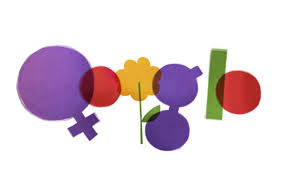 Yesterday, we celebrated International Women’s Day (IWD) for the 108th time. The celebration first took place in 1908 in New York City. Back then, it was called the International Working Women’s Day (IWWD), first organized by the Socialist Party of the US. At some point, the additional W dropped, and the event became a celebration of all women.
Yesterday, we celebrated International Women’s Day (IWD) for the 108th time. The celebration first took place in 1908 in New York City. Back then, it was called the International Working Women’s Day (IWWD), first organized by the Socialist Party of the US. At some point, the additional W dropped, and the event became a celebration of all women.
Fast-forward to 2015. Although significant progress has been made since then, women still face many issues and challenges that must be addressed appropriately to achieve gender equality. One area that seems to be falling behind is women’s political and policymaking participation. How can women be empowered in this regard? And what is the role of new Information and Communication Technologies here?
By the end of 2014, global Internet penetration was close to 40% of the world’s population, while mobile subscriptions were already reaching 100%. Mobile broadband Internet access covers 2.3 billion people (or 77% of all Internet users), 55% of whom are located in developing countries. At the household level, 44% of the global population had Internet access, although only 31% were in developing countries.
These numbers are impressive, despite glaring gaps in poor countries and in access data access disaggregated by gender. Forecasts for the next few years remain positive and suggest continuing these trends, albeit at slightly lower rates.
While the participation of women in politics continues to make significant gains, we still have a long way to go. For example, IPU tells us that only 22% of all Parliamentarians in the world are women, with the Arab States reporting the smallest share with 16%. By the same token, out of the almost 200 UN member states, today we only have nine Presidents and 14 Prime Ministers who are women, an even smaller share than the former. Indeed, the private sector is not immune to this challenge: only 24 women CEOs are in the top 500 companies, or less than 5%.
Although there is evidence of more substantial women’s participation in key decision-making processes, the general trend still seems to suggest a lack of direct involvement, especially in governance processes that can effectively promote gender equality.
Information and Communication Technologies (ICTs) are thus evolving much faster than women’s empowerment. Therefore, the gap in technology access is closing much more quickly than the gap in women’s participation in politics and decision-making processes. While we could undoubtedly find a positive correlation between the two, it seems ICT access alone does not guarantee more significant political and policy participation by women. A series of additional ingredients are needed to accelerate this process.
 The first relates to policies that can offer women incentives to participate in politics and political processes, while simultaneously creating a level playing field and reducing entry barriers for women and all other disadvantaged groups. Several countries, including some developing nations, are already moving along these lines and can serve as beacons to others. Here, ICTs can furnish global knowledge and networking platforms to share and disseminate information on good practices and lessons learned in this area.
The first relates to policies that can offer women incentives to participate in politics and political processes, while simultaneously creating a level playing field and reducing entry barriers for women and all other disadvantaged groups. Several countries, including some developing nations, are already moving along these lines and can serve as beacons to others. Here, ICTs can furnish global knowledge and networking platforms to share and disseminate information on good practices and lessons learned in this area.
We also need to move beyond the numbers game as it is not just a question of quantity but quality. While increasing the number of women in politics and policymaking is essential, so is the need for women in power to openly push for women’s empowerment and gender equity policy agendas where critical issues faced by women in national or local contexts are explicitly addressed. Such agendas are cross-sectoral and permeate a wide range of development policies ranging from education and health to ICTs and broadband, thus demanding adequate capacity and knowledge to be effectively promoted.
Women thus need access to ICTs platforms where agendas, experiences, know-how, and how-to can be shared – including with men who can become fully aware not only of crucial gender issues but also of how they can be addressed in practice. We are well-informed, for example, that of the over 100 national broadband strategies in place today, less than 20% address gender equality issues – and those that tackle it primarily sectorally.
Social media and social networks have been touted as excellent platforms for stakeholders’ participation in decision-making processes. The same can be said of Open Government and Open Data, where one critical target outcome is ensuring non-state actors have a voice in public governance processes.
While access to these platforms and initiatives is still far from universal, a critical factor here is the quality of participation. Women face a series of cultural, social, security and family issues that prevent them from openly participating in decision-making processes. So, while providing the necessary platforms and networks, ICTs alone are not sufficient to break down these barriers.
We are indeed facing multidimensional issues that demand a multi-sectoral approach. We must ensure we take an integrated approach to the problem and work together to achieve our goals. In this light, building multi-stakeholder partnerships – which also include direct beneficiaries – that share common values and objectives and target the participation of women in politics and the decision-making process is essential for achieving gender equality. Empowering women in this regard is thus crucial to fostering change across the board. And ICTs can be formidable allies in the process.
Cheers, Raúl







Comments
One response to “Women, empowerment and new technologies”
Post Edited: Women, empowerment and new technologies http://t.co/O0aJbvhbUs